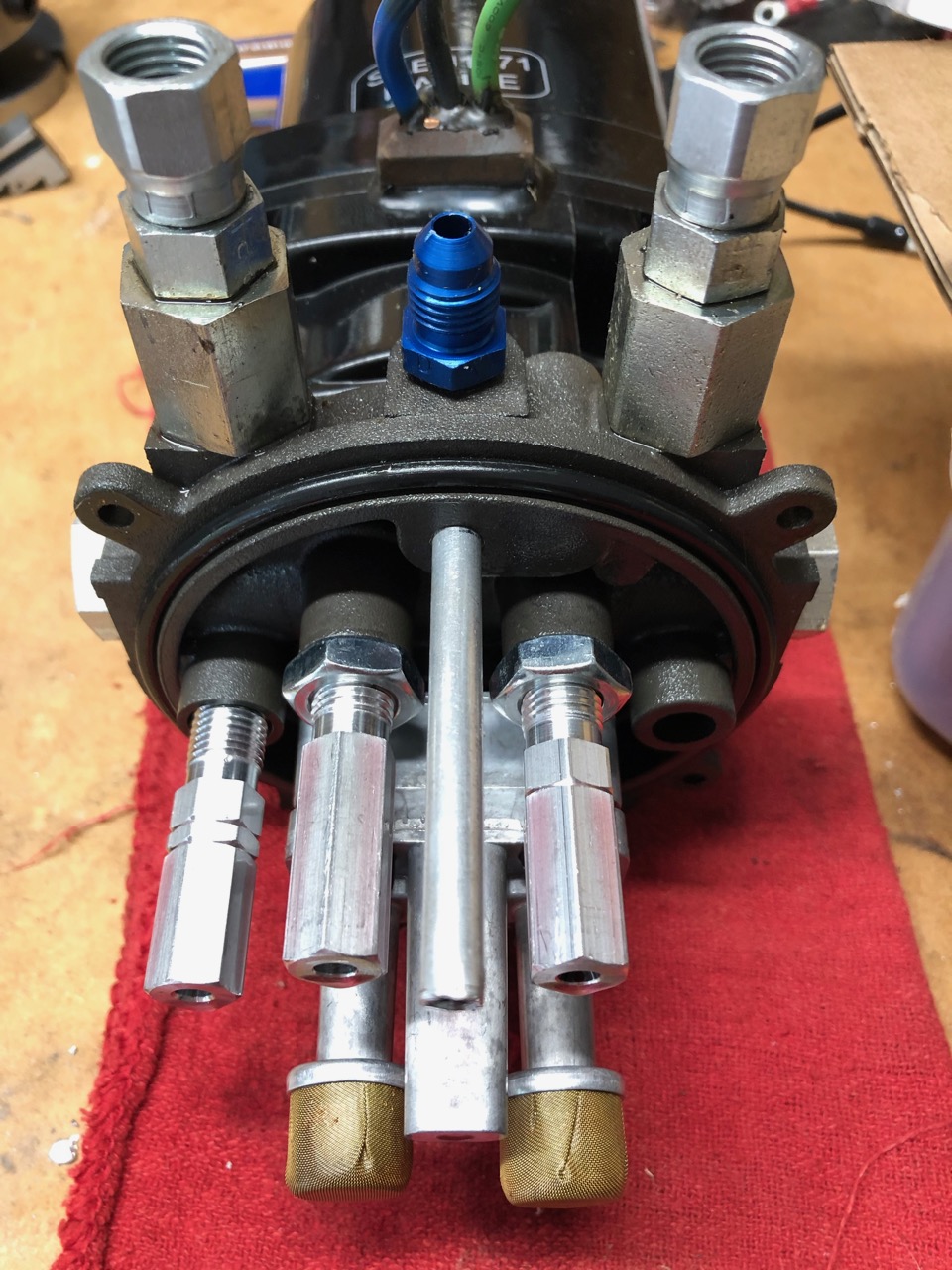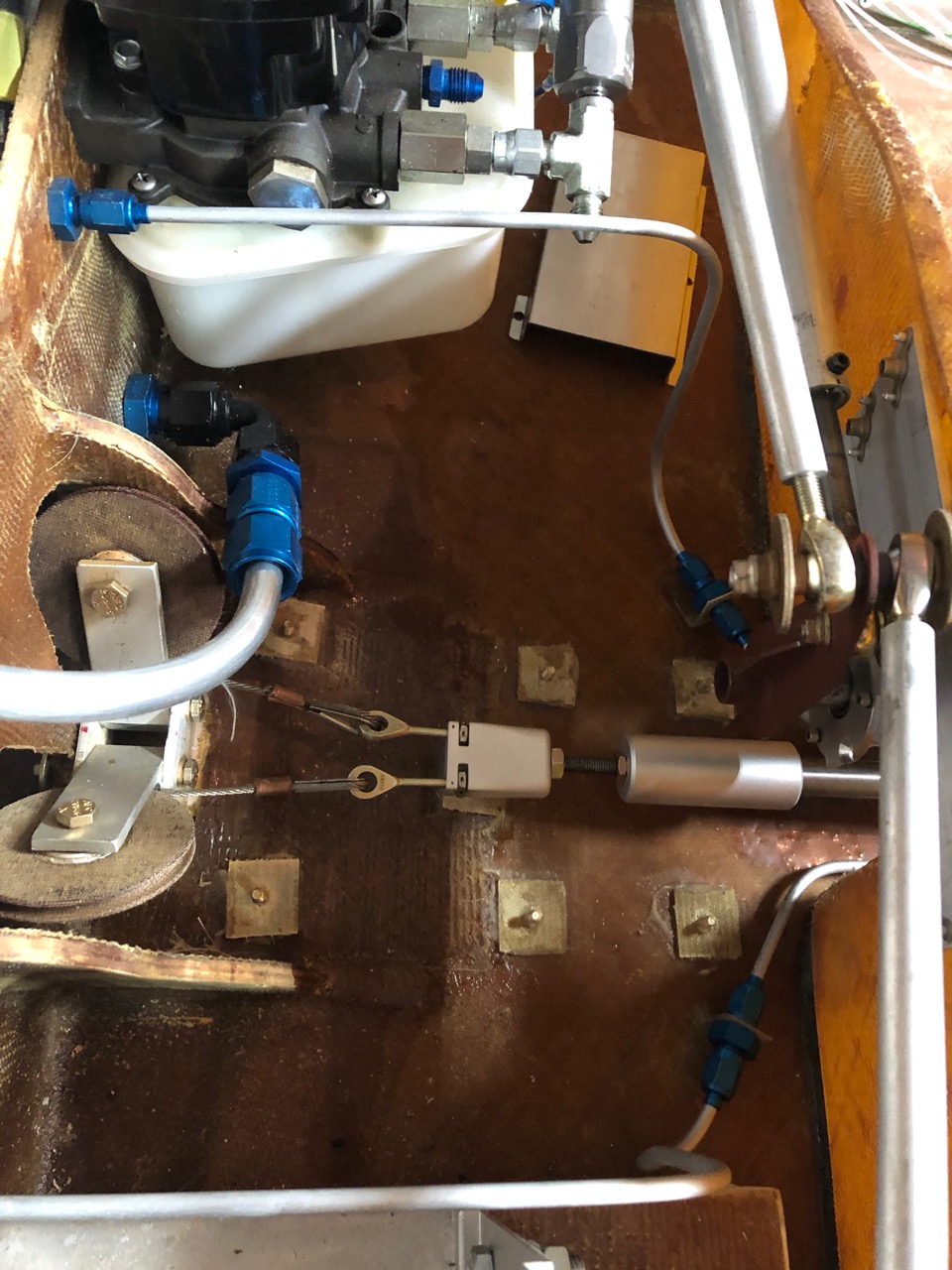It turns out that the version of hydraulic pump supplied to Velocity is configured with the UP side as the high pressure side and the DN side as the low pressure side. The pump itself is symmetrical, producing full pressure independent of rotation direction. Changing the DN side to be the high pressure side requires swapping the internal pressure relief valves at the base of the pump, and recalibrating them for the desired pressure.
As an aside, simply switching the hydraulic lines between the UP and DN side will not work, because the internal valve configuration of the pump requires that hydraulic cylinder retraction (which is our gear up) occurs on the DN side of the pump. The difference lies in the excess hydraulic fluid volume that must be supplied to the cylinders when the UP side of the pump runs (our gear down). Confusing? You betcha.
Scott S. offered to do this PRV swap and calibration at the factory, but I had the required equipment to do it and adjust the PRV settings.











